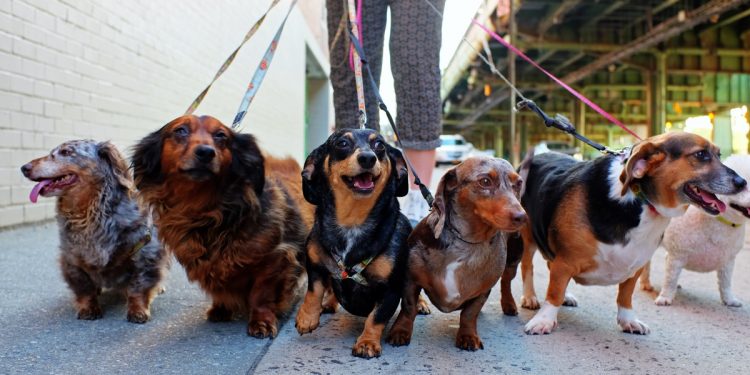One way to get to know some of your neighbors in Mexico is to keep a dog and take it on frequent sallies to the park.
You can take many walks by yourself and never actually speak to anybody you don’t know, much as you might do if you travel on the Metro or in buses. If you are in the habit —as many Mexico City residents are— of driving everywhere, your only communication with your fellow denizens may be a shaking of the head, blowing of the horn, or an untoward hand signal that goes unnoticed by its intended recipient
Striking up a conversation becomes more or less necessary, however, when you come face-to-face with someone who, like you, is on the defensive end of a leash being stretched to its limit by a pet whose intentions could be anything from simple acquaintance to a battle to the death.
This is as good a time as any to establish your “dog-expert” credentials.
You could start out with, ¿qué raza es?, which would be OK as long as the other’s dog isn’t a German Shepherd, a Labrador, or some other well-known breed.
Many dog breeds are the same in Spanish as in English or their original language. Examples are Rottweiler, Doberman, Schnauzer, Bulldog, Boxer. Others are literal translations, for example, pastor alemán (German Shepherd), pastor inglés (English Sheepdog), gran danés (Great Dane).
For some breeds, the habit of using an English adjective and turning it into a Spanish noun is applied. So a French Poodle becomes “un french,” a Golden Retriever “un golden,“ and a Cocker Spaniel, “un cocker.”
A mongrel in Mexico is described as corriente, or callejero (street dog), criollo, or euphemistically, cruzado con corriente (cross with mongrel).
Another possible opener, ¿es macho o hembra? would show you know that, ordinarily, there ought to be no problem if they are opposites, although it could do severe damage to your pose as someone who knows all about dogs.
¿Muerde? is probably the most sensible, yet impractical question. Besides, the growling and barking may only be directed at the other dog, and could also be mere frustration at being held back by a chain.
Anyway, once the preliminaries have been dispensed with, and a decision made whether to allow the dogs to associate freely, come what may, the owners can then get introduced and share impressions on the one thing they apparently have in common—a love of dogs.
Where you would expect to hear things like, what do you feed it? does he sleep indoors or outdoors? has she been spayed? what you actually get are things like, she’s normally quite sociable, he only fights if he’s afraid, he thinks he’s bigger than he actually is.
The habit of attributing psychological or sociological characteristics to an irrational quadruped appears to say more about the owner than the dog, but in any case it serves to get people talking to each other who might otherwise not so much as exchange a “good day.”
Sometimes you’ll come away from these meetings shaking your head and saying to yourself, “I can’t believe I said that!” And the dog, now more settled after a romp in the grass or a bit of a scrap, would probably agree if it could.
Mexico in your inbox
Our free newsletter about Mexico brings you a monthly round-up of recently published stories and opportunities, as well as gems from our archives.







